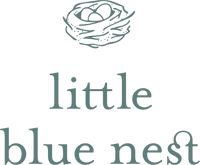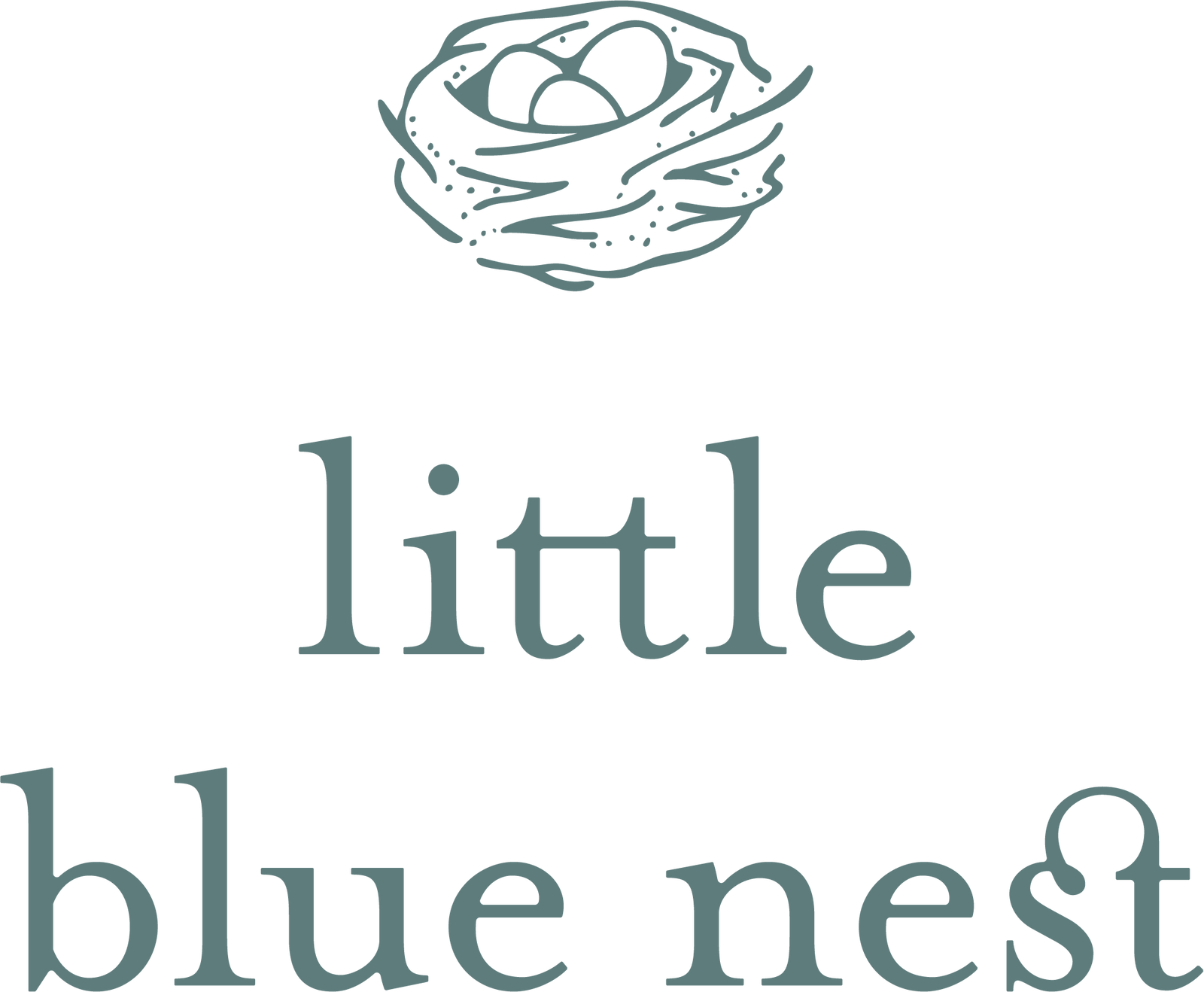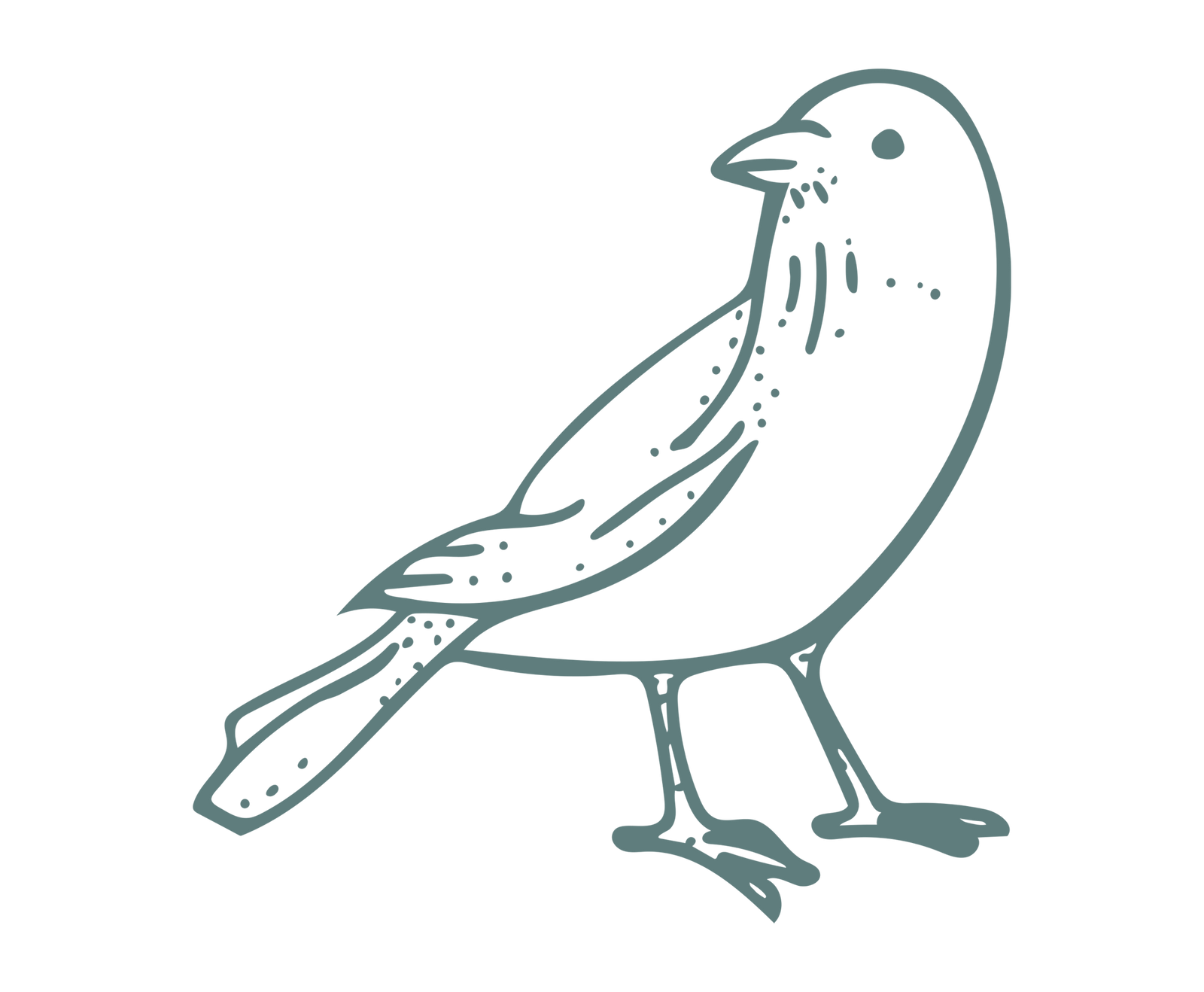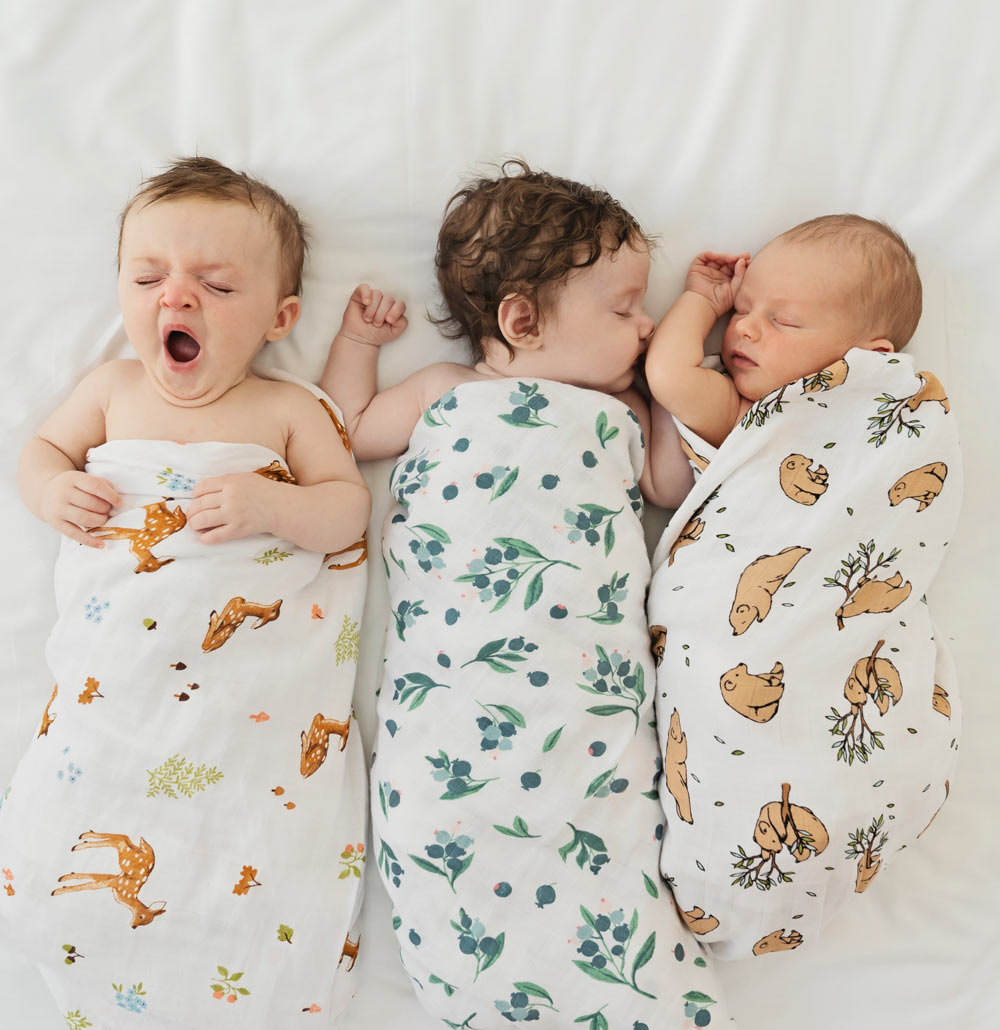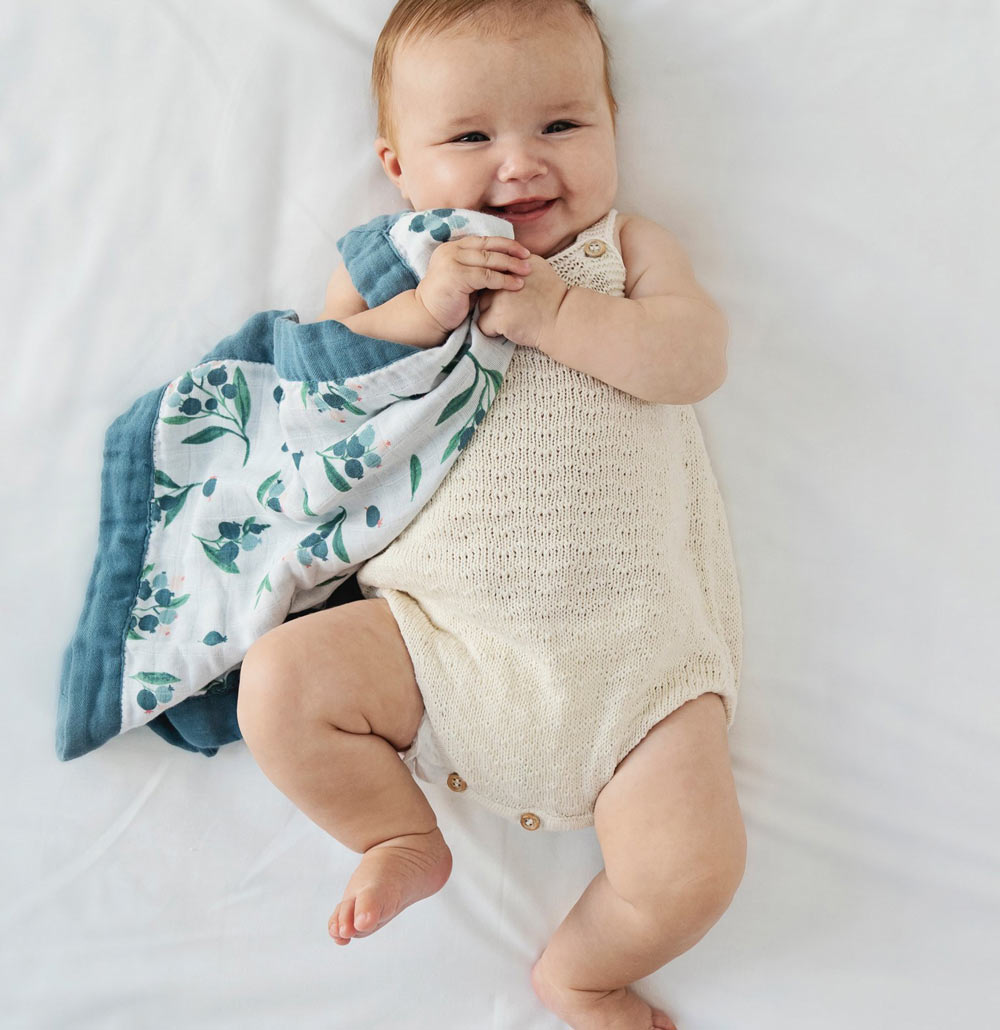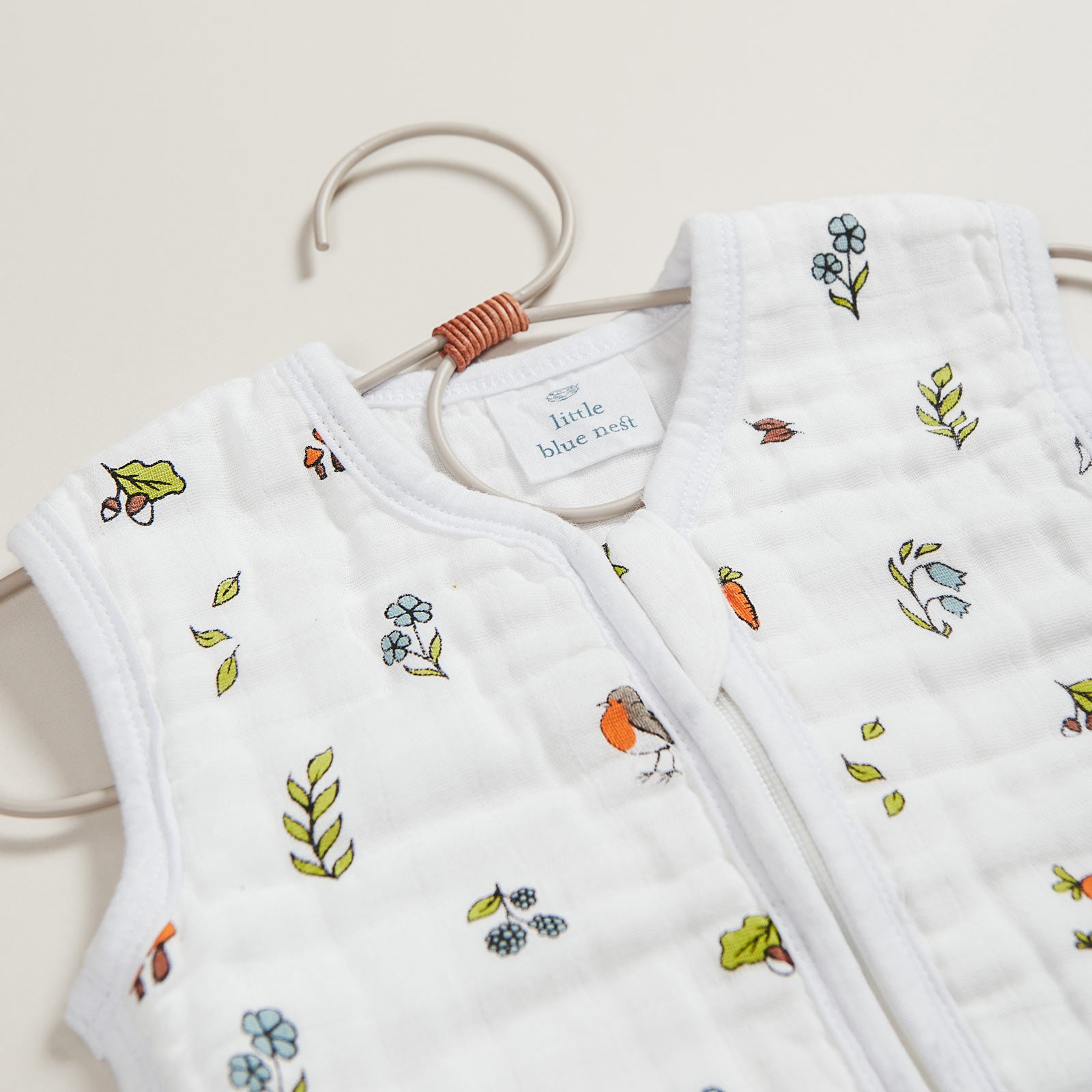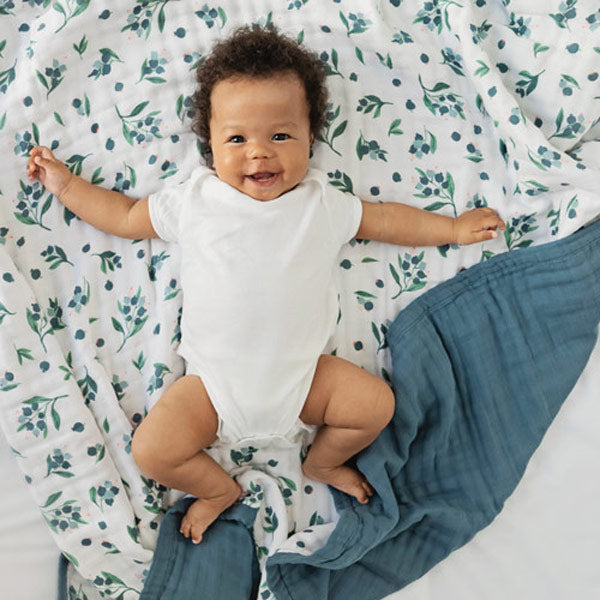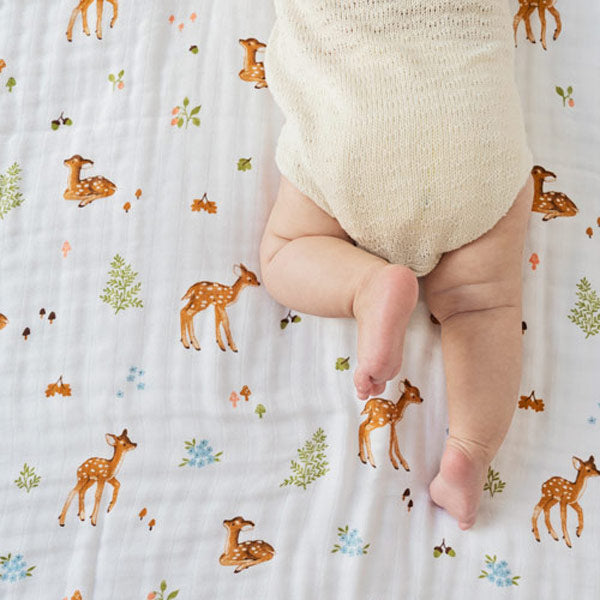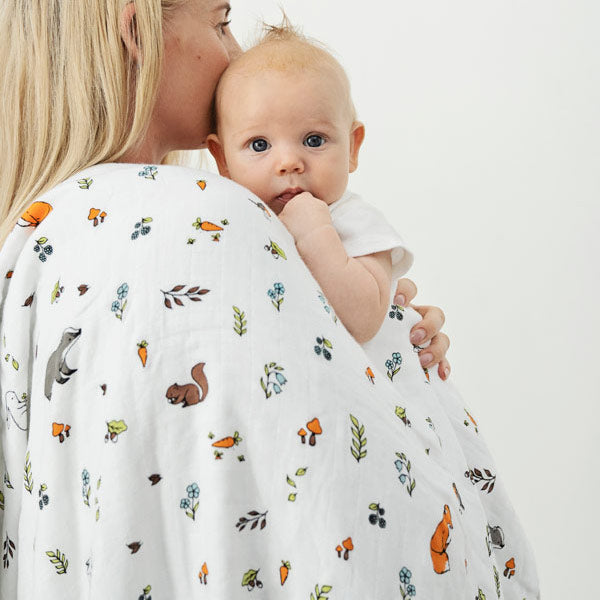When buying baby essentials, you may wonder do newborns need bibs?
Worry not! You're in the right place.
Let's understand bib basics and how many bibs you will need with the new family member on board.
Read on for more information.
What is a Baby Bib?
A baby bib is a small item (usually cloth) that protects a baby's clothes from getting messy. A bib can come in handy when your baby drinks milk, dribbles, or spits milk. Also, when your baby is wearing your favourite shirt, the one that grandma picked, you don't want it to get messy, and that's where a bib can come to the rescue.
If you are stocking baby products in your nursery, check out our muslin bibs at Little Blue Nest.
Do Newborns Need Bibs?
According tothe NHS, reflux is common in babies, and it's when babies bring up milk while feeding. It usually ends when a baby is around one year old. So, you may notice the baby spitting out. Hence, bibs would come in handy for newborns.
Using bibs for a newborn will help in keeping their clothes clean. It will also save yourself from washing clothes repeatedly, what a relief!
At What Age Do Babies Start And Stop Wearing Bibs?
You can put a bib on your baby as soon as they're born. However, they usually eventually stop wearing the bib around two years.
It also depends on your child. For example, some children are picky eaters and don't want to wear the bib while eating. So, once your child learns how to take off the bib, they can snatch it away and stop wearing it altogether.
How Many Bibs Do You Need (And for What Reasons)
The number of bibs you need for your baby will depend on a variety of factors such as:
- How many times you are feeding your baby in a day!
- Whether your baby spits out a lot or vomits once a day.
- Your baby messes with the food while eating.
- You launder frequently, or maybe you prefer laundering every other day.
If your child spits, dribbles, and creates a mess while eating, you will need a bib. So, depending on these factors,10-20 bibs in your nursery stock should be just fine. The more, the better. There is no hard and fast rule as to how many would be enough though. When your baby starts taking to solids, you will have a better idea.
Types of Bibs (And How to Choose The Right One)
It's good to know what types of bibs are available on the market to opt for the right one for your baby.
Consider the following:
Bandana Bibs
This bib looks like a bandana and would help absorb your baby's dribble. It's a common style that will look great on your baby.
We recommend the Organic Cotton Muslin Bandana Bib with Woodland Pattern at Little Blue Nest.
One happy parent had this to say about the bib:
"Not only are these just so beautiful in design but they are super practical too. The layers take away moisture without getting soggy and my little boy amazingly stays dry even with the amount he's now dribbling with teething. They are super soft and seem to get even softer each wash. Love them." - Sophie
Large Bibs
Large bibs are helpful for several reasons. First, they protect the baby's clothes from dribble. Large bibs are also great as a cover shield when breastfeeding your baby.
Feeding Bibs
As the name suggests, the feeding bibs catch the food when your baby is eating. Even so, some are available with small pockets. The purpose of using feeding bibs is to protect the clothes of your growing baby. It also serves to keep your floor clean while the little one eats.
Smock Bibs
Smock bibs are large and have sleeves. Smock bibs with zips would make it more manageable for you and your little ones to wear them and take them off. Smock bibs come in handy when the baby grows and starts using colours and paints.
Disposable Bibs
As the name suggests, disposable bibs would come in handy when you are on vacation. You can use the bibs and dispose of them after using them. It's hard to wash clothes while you're travelling, so it can be an interesting choice. That said, they may not be the most environmentally friendly.
Now, when it comes to selecting the correct bib for your baby, there are certain things to need to keep in mind, such as:
Consider The Age of the Baby When Choosing a Bib
When selecting the bibs for your baby, check the age they are suitable for, as some bibs would be for babies that are six-plus months while others could be for newborns or toddlers. You can see the age mentioned in the product details. It's always better to cross-check before you stock the bibs in your nursery.
Material
When selecting bibs for your little one, it's wise to know which material the bib has. You can opt for organic cotton muslin, bamboo, or anything environmentally friendly. The material for the bib must be suitable for the skin of your little one.
Ease of Use
An essential factor to consider when selecting the bibs for your little ones is the ease of use. You want the bibs to adjust easily. In addition, it must be easy to take off and put on. Thus, when selecting bibs for your little one, you must keep all these factors in mind.
Ease of Cleaning
You want to clean the bibs easily. It's a hassle to take off the food if it's sticking in the fabric. Also, the bib must be easy to wash. So, when selecting the bibs, make sure you keep this factor in mind.
Styles
Now that you're aware of various bib styles give some thought to your final decision. First, select the age-appropriate bibs, and the overall style must be comfortable for the baby. Then, you can try a few bibs and see which suits you and your little one the best! Later you can decide accordingly.
What Else Comes in Handy When Using A Bib?
When using a bib of large size for your baby, it can work as a shield while breastfeeding the baby.
You can use muslin cloths for cleaning the spills, dribble, etc.
A teething baby dribbles a lot, and it would be all over the clothes and even you! A bib would comes in handy in such a situation.
There can be so much mess when feeding a baby, and a bib will help keep your baby's clothes clean. It's better than using tissue paper, and the best part is that you can wash the bibs and reuse them again.
Summary: All About The Baby Bibs In One Place
Your little bundle of joy will need a bib for dribbling and later when they start eating solids. It's vital to select age-appropriate styles. Select the material that's suitable for your baby's skin (we recommend organic cotton).
You can stock 10-15 or 20 bibs in the nursery. The more, the better!
There are different types of bibs available on the market, but you can find the most viable one for your little one. Large bibs can be suitable as a cover when you are breastfeeding.
You can use the muslin cloths for spills and dribble. Using the baby bibs is to keep your baby's clothes clean. Some bibs can even keep the flooring clean as there is a front pocket that can catch all the food!
Make sure you are choosing the correct bib for your baby.
Check out the Little Blue Nest for baby bibs and more products!
